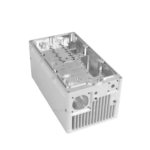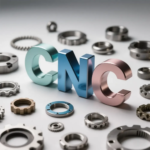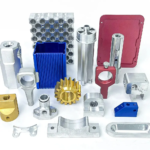Understanding 3D Printing and CNC: The Rise of Hybrid Printers
In recent years, the realm of additive manufacturing has evolved significantly, with 3D printing becoming a staple in various industries, from automotive to healthcare. However, traditional subtractive manufacturing methods like CNC (Computer Numerical Control) machining still play a critical role in producing high-precision parts. As technology advances, the convergence of these two methods has given rise to hybrid 3D printers, bringing the best of both worlds together. This guide explores the intricacies of hybrid 3D printers, their advantages, and some of the best models currently available in the market.
What Are Hybrid 3D Printers?
Hybrid 3D printers integrate both additive and subtractive manufacturing processes. This means they are capable of 3D printing structures and subsequently refining them through CNC machining. By marrying these two technologies, hybrid printers can produce complex geometries with high precision while also enabling the finishing touches required for professional-quality outputs.
This versatility is especially crucial for industries that demand precision and functionality, as it allows for rapid prototyping and short production runs without sacrificing quality or detail. Hybrid systems can often operate without the need for substantial human intervention, significantly reducing labor costs and human error.
Benefits of Hybrid 3D Printers
1. Enhanced Precision and Finish
One of the primary advantages of hybrid 3D printers is the ability to achieve both complex designs and high tolerances. While 3D printing can create intricate shapes that might be challenging to machine, CNC can carve those shapes into precise specifications. This combined approach results in end products that not only meet but often exceed industry standards.
2. Reduced Production Time
Hybrid printers streamline the manufacturing process. Since both additive and subtractive methods occur within the same machine, it reduces job setup times, transportation of parts between machines, and overall production times. This is particularly valuable in industries where time-to-market is critical.
3. Resource Efficiency
These hybrid systems can maximize the use of materials. For example, during the CNC process, leftover materials can be recycled and integrated back into the 3D printing process. This not only minimizes waste but also lowers costs for businesses keen on sustainable practices.
4. Flexibility and Adaptability
Hybrid printers are incredibly versatile, handling a variety of materials—from plastics and metals to ceramics and composites. This adaptability allows manufacturers the freedom to experiment with different materials and designs, leading to innovative product developments.
5. Simplified Workflow
The integration of both technologies enables engineers and designers to streamline workflows. With reduced need for additional machinery and fewer handling steps, hybrid systems simplify processes from prototyping to final production.
Top Hybrid 3D Printers in the Market
As the demand for hybrid manufacturing grows, several models have emerged as frontrunners in the industry. Below, we explore some of the best hybrid 3D printers available today:
1. Markforged X7
The Markforged X7 stands out with its unique ability to print carbon fiber-reinforced nylon parts. Additionally, it offers CNC capabilities for superior finishing. The X7’s advanced sensors ensure structural integrity and fidelity during the printing phase. Its software integrates with existing CAD programs, making it ideal for engineers looking to streamline their design and production processes.
2. 3D Systems ProX DMP 320
The ProX DMP 320 is designed for metal 3D printing and incorporates subtractive manufacturing capabilities. It utilizes Direct Metal Printing (DMP) technology, ensuring high-quality metal components with reduced post-processing times. This hybrid printer is particularly favored in aerospace and medical industries, where precision and reliability are paramount.
3. Sintratec S2
Sintratec combines SLS (Selective Laser Sintering) for the additive phase with CNC milling capabilities for the subtractive process. The S2 excels with its large build volume and ability to print high-performance polymers. Its open-source software allows for customizable workflows, catering to different user needs and preferences.
4. Hybrid Manufacturing Technologies’ Hybrid Additive
This printer merges conventional CNC machining with additive manufacturing processes. Ideal for manufacturers needing to produce metal parts with exceptional details, it allows users to combine new and old designs, creating hybrid components tailored to specific requirements.
5. WASP Delta WASP 3D
This Italian manufacturer focuses on large-scale 3D printing and has introduced models capable of subtractive machining. WASP’s Delta WASP printers are known for their ability to use eco-friendly materials and for their scalability, making them perfect for a range of applications from art installations to architectural models.
The Future of Hybrid 3D Printing
The future of manufacturing seems poised to revolve around hybrid 3D printing technologies. As industries push for more automation and smart manufacturing solutions, hybrid printers will likely become integral to production lines across the globe. The combination of additive and subtractive capabilities enables manufacturers to meet the ever-increasing demands for customization, speed, and precision.
Moreover, advancements in AI and machine learning are expected to further enhance the capabilities of hybrid systems, allowing for real-time monitoring and error-detection, thus pushing the boundaries of what these machines can achieve. As the technology matures, hybrid 3D printers will likely become more accessible, enabling small businesses to compete in markets traditionally dominated by larger manufacturers.
Conclusion
Hybrid 3D printers are revolutionizing the manufacturing landscape by combining the strengths of both additive and subtractive processes. As industries continue to evolve, embracing these advanced technological solutions will empower businesses to innovate, reduce waste, and significantly enhance productivity. The selection of the right hybrid printer depends on specific needs and applications, but the options available today are more versatile and capable than ever before.
Whether you’re a startup looking to bring new ideas to life or an established manufacturer aiming to optimize production lines, investing in hybrid 3D printing technology may just be the key to achieving your goals in the rapidly changing world of fabrication.
Daguang focuses on providing solutions such as precision CNC machining services (3-axis, 4-axis, 5-axis machining), CNC milling, 3D printing and rapid prototyping services.










